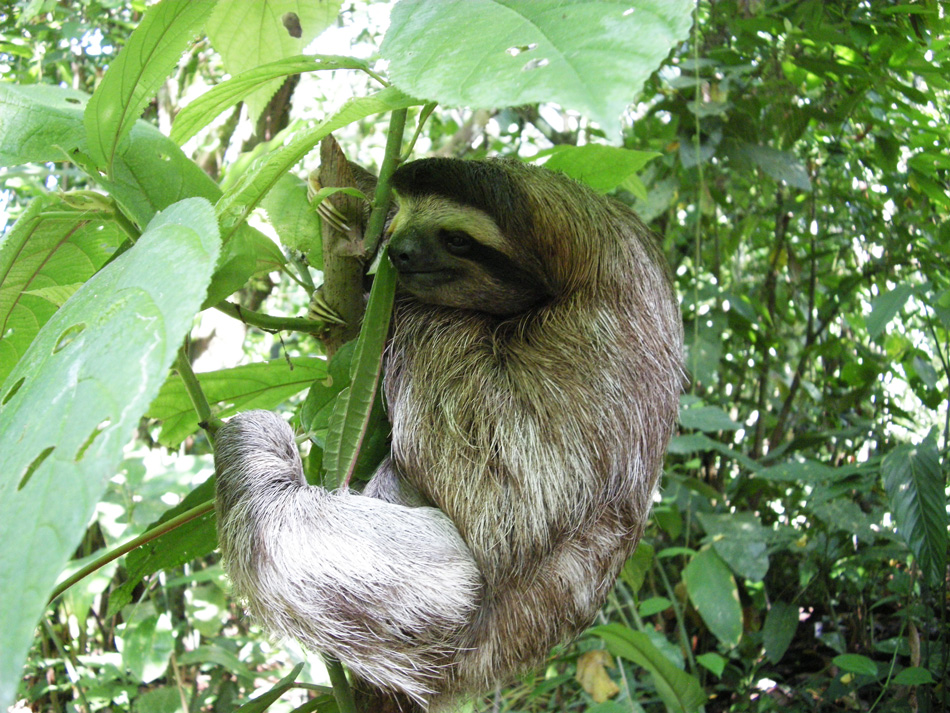(< previous :: next >)
Three-toed sloth, one of the permanent residents.
Famously slow-moving, our resident sloth travels at a top speed of 0.15 mph.

Three-toed sloth
Three-toed sloths are the only members of the Bradypus genus and the Bradypodidae family. Although similar to the somewhat larger and generally faster moving two-toed sloths, the two genera are not particularly closely related. Both types of sloth tend to occupy the same forests: in most areas, a particular single species of three-toed sloth and a single species of the larger two-toed type will jointly predominate. Famously slow-moving, the sloth travels at a top speed of 0.15 mph.
Characteristics
Three-toed sloths are about the size of a small dog, with the head and body having a combined length of around 60 centimeters, and the animal having a weight of 3.5-4.5 kg (or between 7 and 10 lbs). Unlike the two-toed sloths, they also have a short (6-7 cm) tail, and they have three clawed toes on all four of their limbs. Three-toed sloths are sporadically active both day and night, typically for about 10-11 hours out of every 24.
They feed almost exclusively on leaves, and, like their two-toed cousins, have a complex, multi-chambered stomach to ferment tough vegetable matter. They move between different trees up to four times a day, although they prefer to keep to a particular type of tree, which varies between individuals, perhaps as a means of allowing multiple sloths to occupy overlapping home ranges without competing with each other. Three-toed sloths have no incisor or canine teeth, just a set of peg-shaped cheek teeth that are not clearly divided into premolars and molars
The three-toed sloth, unlike most other mammals, does not maintain a constant body temperature, being closer to a reptile in this respect. Because its body temperature goes down as the air temperature goes down, the three-toed sloth is only able to live in humid and warm environments.
Habitat
Previously, three-toed sloths were believed to have lived only in Cecropia trees, locally known as Embauba trees. Recent studies indicate that they also reside in at least 96 other tree species. The original assumption was skewed because the Cecropia trees have a relatively open canopy, making it easier to observe a sloth in these trees.
Copyright: This article is licensed under the GNU Free Documentation License. It uses material from the Wikipedia article on Three-toed sloth.
 Copyright: The DreamScape Group
Copyright: The DreamScape Group